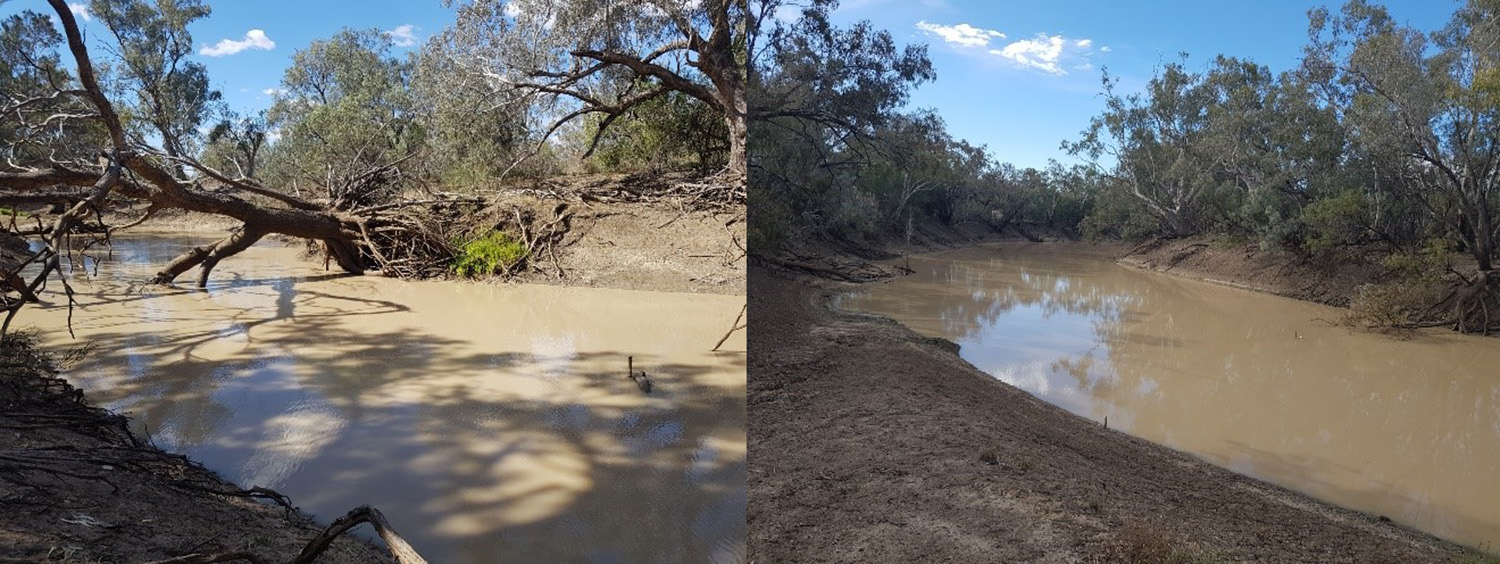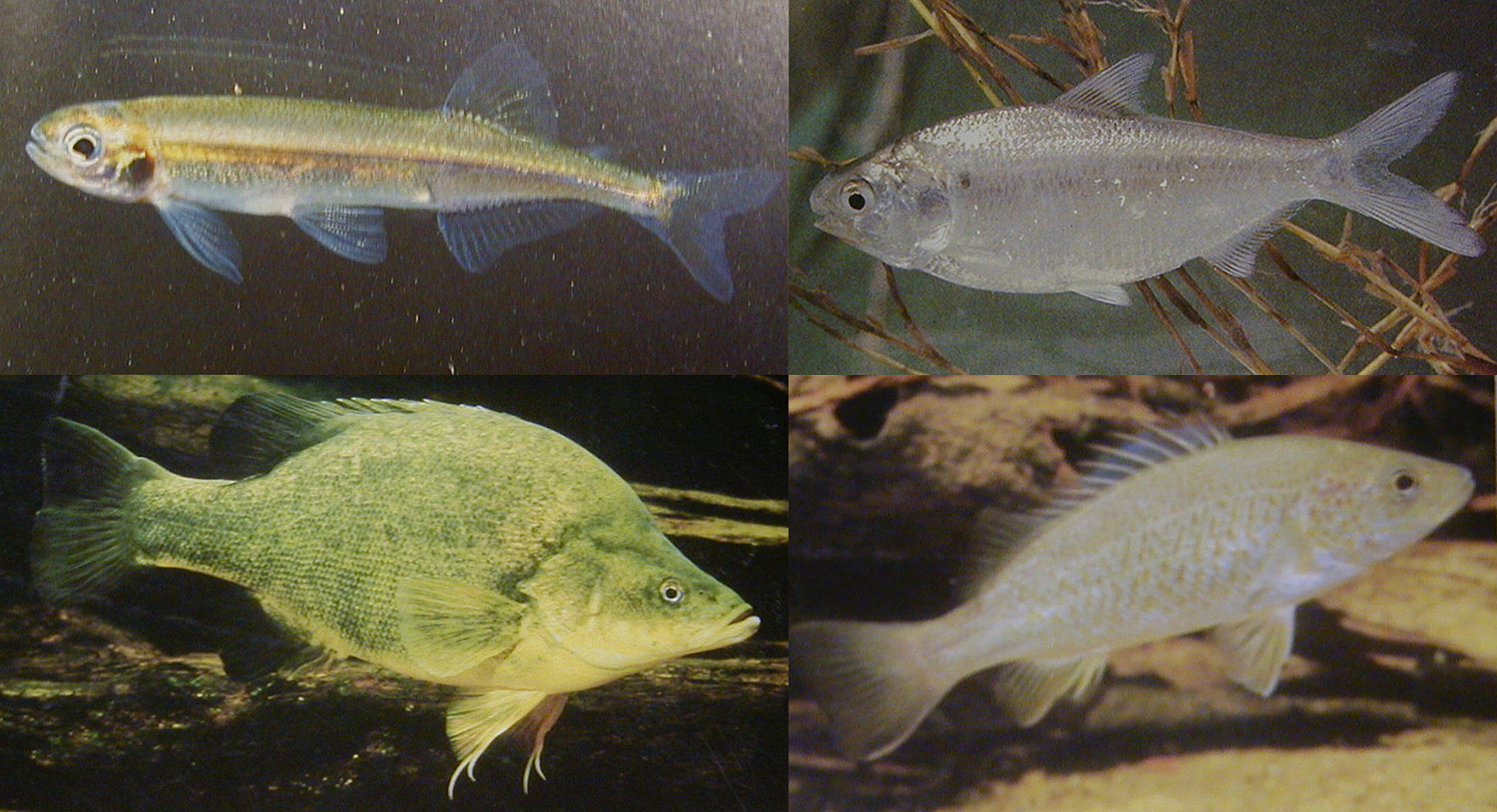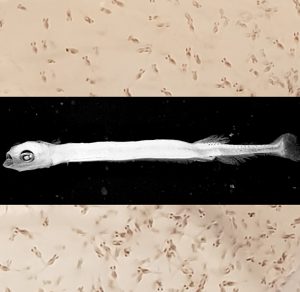Authors: Julia Mynott and Stephen ‘Harry’ Balcombe
The northern Murray Darling Basin (NMDB) is comprised of a unique array of river, channel and wetland complexes, especially in the lowland river reaches. These river reaches are nested within an unpredictable semi-arid climate. Due to the influence of a variable climate, these dryland rivers have flow regimes that comprise mostly of extended periods of zero flow, occasionally punctuated with irregular flow events of short duration (days to weeks). Hence, the river networks for the most part exist as a series of disconnected waterholes only joined when there are significant rainfall events in their upper catchments, or stored water is released from upstream.
EWKR researchers have been investigating temporal patterns in larval fish abundance in the Narran and Culgoa Rivers in the NMDB to gain insight into fish breeding patterns, and the likely success of these larvae to grow into juveniles and potentially adults. While much of the NMDB is used to long dry periods, even for these areas it is currently enduring a significant period of drought, with many waterholes drying completely in the Narran and Culgoa Rivers. Researchers have taken this opportunity to look at fish responses in these stressed systems and whether the fish species have the resilience to bounce back when there is an improvement in river condition.

Photo Credit: Kate Hodges, Qld Government
Safe places in a drying system?
When a river is considered intermittent (temporary) with limited flow events across years, waterholes play an extremely important role for biodiversity. These waterholes provide a refuge for freshwater organisms, especially those that can’t move to other areas in the system or survive desiccation. Waterholes are deeper spots within the river channel that maintain water within them while the shallower areas around them dry out. These biotas can survive in the water holes until the next flow event when the system becomes connected again.
In this study, EWKR researchers looked at four waterholes – two on the Narran River and two on the Culgoa River. The waterholes that were studied fluctuated in depth over time and decreased steadily over the summer period as the conditions became drier, in the absence of flow. An increase in depth in the waterholes was seen when in-flows occurred from either rain events in the catchment or released water flows (from reservoirs) that meant some waterholes were ‘topped-up’. One site on the Narran River completely dried (follow the green line in the graph), it started as a shallow waterhole and with no in-flow events occurring it continued to dry out. When systems are becoming dry, they become stressed and animals like fish will suffer unless they find somewhere safe to survive and over the warmer months breed.

What conditions do fish need to breed?
Australian freshwater fish species each have their own requirements for breeding events to occur with much work currently focussed on the influence of flow, temperature and water quality. In the NMDB, commonly occurring fish such as bony bream, Australian smelt, carp gudgeons, freshwater catfish, and golden and spangled perch all have different environmental conditions needed for spawning events to occur. These conditions vary across the year, with the primary cue for spawning being increased water temperature following winter. Some of the fish species are really locked into a seasonal spawning period, such as Australian smelt that breeds in spring. Other species such as bony bream is more flexible and can spawn across most of the year when the conditions are suitable. Each species has their own unique environmental set of cues, that in combination, will determine the likely timing of spawning and then the success of the larvae to recruit into the population.
The EWKR research was conducted over spring 2017 to autumn 2018 and revealed very low numbers of larval fish in the Narran and Culgoa Rivers, especially when compared to other northern intermittent rivers that have been previously sampled with similar methods including the Moonie and Warrego Rivers in the MDB and Cooper Creek in the Lake Eyre Basin. The researchers found that most of the larval fish collected were small-bodied species such as carp gudgeons, bony bream and smelt. Very few of the larger-bodied fish such as golden perch and catfish were recorded – particularly following flow events which was surprising as this is when they are cued to spawn.

Why so few larvae?

This led researchers to ask why there were so few larvae in the system. The obvious answer was that the area was experiencing a drought which meant that there was a significant lack of water in the system. With poor river condition some adults may not have been in a condition for successful breeding, with precious reserves instead used to maintain health to then capitalise on the next flow event. An alternate explanation is that the significantly altered rivers (since water no longer moves naturally through river systems), means that there is less connectivity throughout these rivers. A key driver of population increase is having a large and healthy adult breeding population. Without healthy adults there is lower spawning, less juveniles, less recruitment success, and overall less ability for a species to bounce back after stressful events.
Additionally, after drought, fish will need to recolonise newly inundated channels and smaller waterholes both as juveniles and adults. With less connected deep water to provide for movement of large-bodied adults and the recruitment of juveniles the populations become reduced. The presence of a multitude of in-stream barriers such as weirs and locks impose an additional stress and mean recolonization is only possible where flow events are large enough or where structures such as fish ladders are in place (which may not always allow passage for all species or size-classes of fish (i.e. larvae)).
The good news story however, was that while researchers saw less larvae overall, they found that the larger more permanent waterholes always had more larvae present in the system compared to the more temporary ones and are the true “refugia” that should be protected in dry periods.
What have we learned?
The fish in the northern basin are relatively resilient and most species are still hanging in there despite the poor state of the system, especially the small-bodied fish such as smelt and carp gudgeons. Some of the medium to larger-bodied species such as bony bream and golden perch can also persist, but for how long?
These fish species and other freshwater organisms that use waterholes as refuges and support themselves in these places, can survive through harsh conditions if there are water refuges. The waterholes support a high abundance of zooplankton and a variety of other organisms such as aquatic and terrestrial invertebrates that provide a food base for fish to survive. When any water comes into the system through rain events or released flows, even if just enough for a top-up of critical waterholes, fish can respond in a positive way that includes spawning and this enables populations to persist through the extreme conditions.
Knowing that these systems are stressed, and the drought is continuing, it is important particularly for intermittent rivers that we make sure there are sufficient refuges for our fish and other freshwater organisms to allow them to bounce-back when better conditions return. These refugia are resilient and will respond to improved condition even if it is only a ‘top-up’. Management of these rivers needs to include strategies that enable the protection of key waterhole refugia such as ‘top-up’ flows or protection from over-extraction in dryer periods. Such actions will cater for system resilience and ultimately, protect and enhance riverine biodiversity.
In the long term, we need to consider protecting the refuges themselves from extraction, pollution and other stressors. We must ensure that the banks of the river are stable, have healthy plant communities to stop erosion and protect the water quality. If we don’t protect the refuges, we could be left with few fish in the NMDB something nobody wants to see!
For further information:
- contact Fish Theme Researcher, Stephen ‘Harry’ Balcombe: s.balcombe@griffith.edu.au
- contact Centre for Freshwater Ecosystems: cfe@latrobe.edu.au
Related links:
